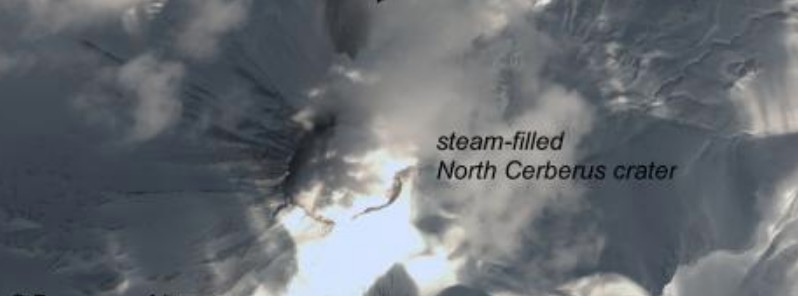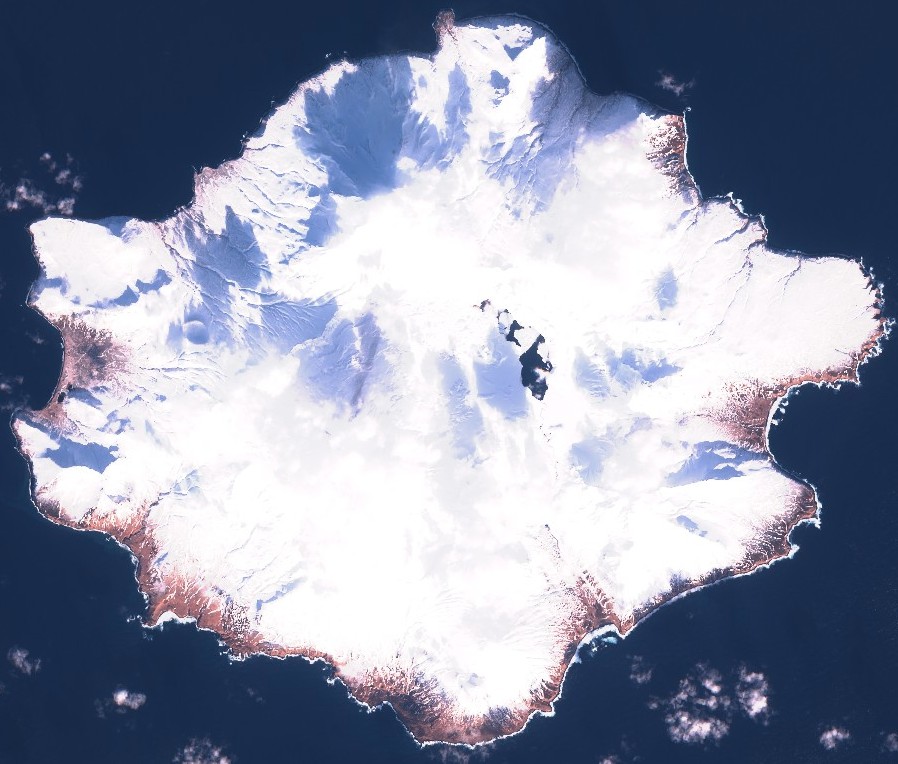Small explosion at Semisopochnoi volcano, Aviation Color Code raised to Orange, Alaska

Regional infrasound sensors detected a small explosion at Semisopochnoi volcano, Alaska on March 19, 2021, indicating an increase in eruptive activity.
As a result, the Alaska Volcano Observatory (AVO) has raised the Aviation Color Code to ORANGE and the Volcano Alert Level to WATCH at 13:46 UTC today.
Cloudy weather conditions are obscuring satellite views of the volcano.
It is unknown if the explosion produced a low-level ash cloud or local ash deposit.
Small eruptions producing minor ash deposits within the vicinity of the volcano are typical of activity during unrest at Semisopochnoi since September 2018.
Local seismic stations have been offline since November 11, 2020.
New explosions could occur at any time with no warning, AVO said.
Geological summary
Semisopochnoi, the largest subaerial volcano of the western Aleutians, is 20 km (12.4 miles) wide at sea level and contains an 8 km wide (5 miles) caldera. It formed as a result of the collapse of a low-angle, dominantly basaltic volcano following the eruption of a large volume of dacitic pumice.
The high point of the island is 1221 m high (4 005 feet) Anvil Peak, a double-peaked late-Pleistocene cone that forms much of the island's northern part.

Semisopochnoi on February 6, 2021. Credit: Copernicus EU/Sentinel-2, TW
The three-peaked 774 m high (2 539 feet) Mount Cerberus volcano was constructed during the Holocene within the caldera. Each of the peaks contains a summit crater; lava flows on the northern flank of Cerberus appear younger than those on the southern side.
Other post-caldera volcanoes include the symmetrical 855 m (2 903 feet) high Sugarloaf Peak SSE of the caldera and Lakeshore Cone, a small cinder cone at the edge of Fenner Lake in the NE part of the caldera.
Most documented historical eruptions have originated from Cerberus, although Coats (1950) considered that both Sugarloaf and Lakeshore Cone within the caldera could have been active during historical time.
This volcano is located within the Aleutian Islands, a UNESCO Biosphere Reserve property.
Featured image: Worldview-3 satellite image of Semisopochnoi on February 6, 2021. A thin ash deposit is visible <3 (1.8 miles) km to the north of North Cerberus crater, which is filled with steam. Credit: Matt Loewen

Commenting rules and guidelines
We value the thoughts and opinions of our readers and welcome healthy discussions on our website. In order to maintain a respectful and positive community, we ask that all commenters follow these rules.